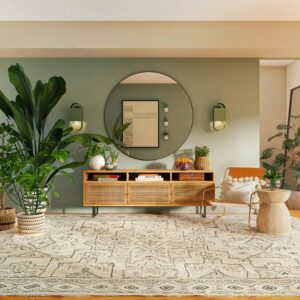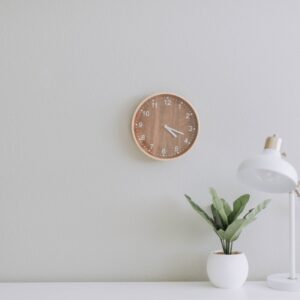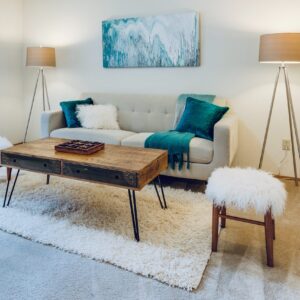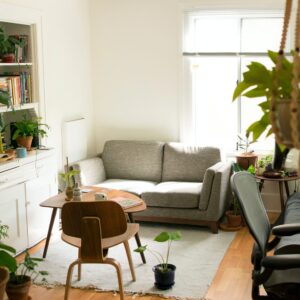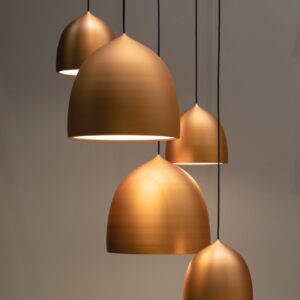Economical interior design on a budget
Designing Dreams on a Dime: Expert Tips for Economical Interior Design on a Budget
Introduction: Transforming your home into a stylish and inviting space doesn’t have to come with a hefty price tag. As an expert interior designer, I’m passionate about proving that a limited budget doesn’t limit your design potential. In this blog, I’ll share practical and creative tips for achieving economical interior design on a budget, ensuring that your home reflects your style without breaking the bank.
- Strategic Planning for Maximum Impact: Start your budget-friendly design journey with strategic planning. Identify key areas that need attention and prioritize updates based on impact. Focusing on high-impact changes ensures that your budget is well-spent on areas that make a significant difference.
- Embrace DIY Projects: DIY projects are a budget-conscious decorator’s best friend. From crafting your own wall art to repurposing furniture, there are endless possibilities for creating unique decor elements without the cost of store-bought items. Get creative and let your personality shine through your DIY endeavors.
- Thrifty Treasure Hunting: Scour thrift stores, garage sales, and online marketplaces for hidden treasures. Thrifted furniture, decor accents, and accessories can be gems waiting to be discovered at a fraction of the cost. Embrace the thrill of the hunt and enjoy the uniqueness that thrifted finds bring to your home.
- Opt for Multi-Functional Furniture: Invest in multi-functional furniture that serves more than one purpose. Items like storage ottomans, sofa beds, or nesting tables not only maximize functionality but also allow you to stretch your budget by getting more value out of each piece.
- Budget-Friendly Window Dressing: Revamp your windows with budget-friendly dressing options. DIY curtains, repurposed fabric, or even simple bamboo shades can add style and privacy without the expense of custom window treatments. Choose affordable options that align with your design vision.
- Affordable Art Alternatives: Adorn your walls with affordable art alternatives. Frame postcards, create a gallery wall with personal photographs, or explore printable art options online. Inexpensive artwork can add a touch of personality to your home without the cost of original pieces.
- Repaint for a Fresh Look: Harness the transformative power of paint to give your home a fresh and updated look. Painting walls, furniture, or even accent pieces is a cost-effective way to introduce color and style. Experiment with bold or neutral tones based on your design preferences.
- Smart Use of Area Rugs: Define and anchor your spaces with budget-friendly area rugs. Look for affordable options in discount stores or during sales to add texture and warmth to your floors. Area rugs are versatile decor elements that can tie a room together without breaking the bank.
- Mix High and Low-End Decor: Achieve a balanced look by mixing high and low-end decor. Invest in key pieces that matter most to you, such as a quality sofa or statement artwork, and complement them with budget-friendly accessories. This approach ensures a curated and cohesive design.
- Focus on Decluttering: Sometimes the most impactful changes come from simplifying and decluttering. Streamline your spaces by removing unnecessary items and embracing a minimalist approach. A clutter-free environment not only looks more polished but also allows your chosen decor elements to shine.
- Swap and Rearrange Furniture: Engage in furniture swaps or rearrange existing pieces to create a fresh look. Experimenting with different layouts and furniture arrangements is a cost-free way to refresh your space and discover new design possibilities.
- Utilize Free Design Resources: Take advantage of free design resources available online. Browse through design blogs, watch tutorial videos, and explore budget-friendly decor ideas that align with your style. The wealth of information available can inspire and guide your economical design journey.
- Personalize with DIY Accessories: Personalize your home with DIY accessories that reflect your personality. Create custom throw pillow covers, craft unique vases, or repurpose items into decorative accents. DIY accessories add a touch of individuality without straining your budget.
- Budget-Friendly Organizational Solutions: Enhance your home’s organization with budget-friendly solutions. Utilize thrifted baskets, storage bins, or repurposed containers to keep your space tidy and visually appealing. Organizational solutions don’t have to be expensive to be effective.
- Stay Patient and Shop Sales: Patience is a virtue in budget-friendly interior design. Wait for sales, discounts, and clearance events to make your purchases. Timing your shopping endeavors can result in significant savings, allowing you to stretch your budget further.
Conclusion: Economical interior design on a budget is not only achievable but also an exciting and creative endeavor. By embracing DIY projects, thrifty treasure hunting, and strategic planning, you can transform your home into a stylish haven that reflects your personality without breaking the bank. Remember, the key to successful budget-friendly design is resourcefulness, creativity, and a willingness to think outside the box. Happy decorating!
Frequently Asked Questions (FAQs) – Economical Interior Design on a Budget
Q1: Is it possible to achieve a stylish and well-designed interior on a tight budget? A1: Absolutely! Economical interior design is about making strategic choices and prioritizing impactful changes. With creativity and thoughtful planning, you can create a stylish home without exceeding your budget.
Q2: What are some cost-effective ways to update the look of my interior? A2: Consider simple changes like rearranging furniture, adding new throw pillows, or incorporating affordable decor items. A fresh coat of paint or removable wallpaper can make a significant impact without a high cost.
Q3: Can I find stylish furniture on a budget? A3: Yes, explore thrift shops, online marketplaces, or budget-friendly furniture stores for affordable options. Consider second-hand pieces that can be updated with paint or new hardware. Mixing and matching styles can also create a unique and economical look.
Q4: How can I create a cohesive and stylish look without purchasing new furniture? A4: Use coordinated accessories like throw pillows, rugs, and decor items. Consider rearranging furniture to create a more functional and visually appealing layout. DIY projects, like creating custom slipcovers, can contribute to a cohesive and stylish look.
Q5: Are there budget-friendly solutions for updating outdated fixtures in my home? A5: Yes, consider spray-painting outdated fixtures for a quick refresh. Updating cabinet hardware, light switch covers, or faucets can also make a significant impact without a high cost. Look for budget-friendly replacements if needed.
Q6: Can I give my home a new look without major renovations? A6: Absolutely. Focus on simple changes like updating wall colors, rearranging furniture, or adding affordable decor items. Consider DIY projects like creating custom artwork or repurposing existing furniture for a fresh look.
Q7: How can I enhance the functionality of my home on a budget? A7: Optimize storage by decluttering and organizing. DIY shelving and storage solutions are cost-effective and practical. Consider simple fixes like adding hooks, racks, or storage bins to keep spaces organized.
Q8: What are some low-cost solutions for incorporating color into my interior design? A8: Paint is one of the most budget-friendly ways to add color. Consider an accent wall or using bold colors on smaller surfaces. Introduce colorful accessories like throw pillows, rugs, and artwork for vibrant and affordable pops of color.
Q9: Can I update my home’s lighting without a significant expense? A9: Yes, look for affordable lighting fixtures at discount stores, thrift shops, or online marketplaces. Consider DIY projects like updating lampshades or painting existing fixtures. Adding floor or table lamps can enhance the lighting scheme without a major investment.
Q10: Where can I find inspiration for economical interior design ideas? A10: Explore online platforms, interior design blogs, and social media for budget-friendly decor inspiration. Join DIY communities for creative ideas and projects. Look for budget home decor challenges or contests that showcase stylish and affordable transformations.
In conclusion, the pursuit of economical interior design on a budget is a dynamic and rewarding journey that underscores the principle that good design is achievable for everyone, regardless of financial constraints. Throughout this exploration, it becomes evident that with a thoughtful, strategic, and creative approach, individuals can transform their living spaces into stylish and personalized havens without a significant financial outlay.
As an expert interior designer, I advocate for a mindset that prioritizes value and impact. Strategic investments in high-impact areas, combined with thrifty choices, allow for the creation of visually appealing interiors that align with both taste and budget. This approach ensures that every design decision contributes meaningfully to the overall aesthetic and functionality of the space.
The versatility of repurposing and upcycling takes center stage in economical interior design. Embracing DIY projects, refurbishing existing furniture, and finding new roles for everyday items add a layer of uniqueness to the design while minimizing costs. This hands-on, creative approach not only contributes to a personalized home but also reflects an environmentally conscious design ethos.
Smart shopping and budget-friendly finds become invaluable tools in the toolkit of economical design. Scouting for affordable decor items, exploring second-hand options, and making savvy choices in sales or clearance sections allow individuals to curate stylish interiors without exceeding their budgetary limits. Thoughtful curation ensures that each piece contributes to the overall design narrative.
Incorporating cost-effective materials and finishes becomes a strategic element in economical interior design. Opting for budget-friendly alternatives that mimic the look of more expensive materials allows for a sophisticated design aesthetic without the corresponding high costs. This pragmatic approach stretches the budget while maintaining a visually appealing result.
In conclusion, economical interior design on a budget is an exercise in balance, creativity, and resourcefulness. By focusing on high-impact choices, embracing repurposing and upcycling, making smart shopping decisions, and leveraging cost-effective materials, individuals can craft homes that are not only affordable but also stylish and reflective of their unique personality. The result is an interior that proves that good design transcends financial limitations, showcasing the transformative power of thoughtful and economical design choices.





